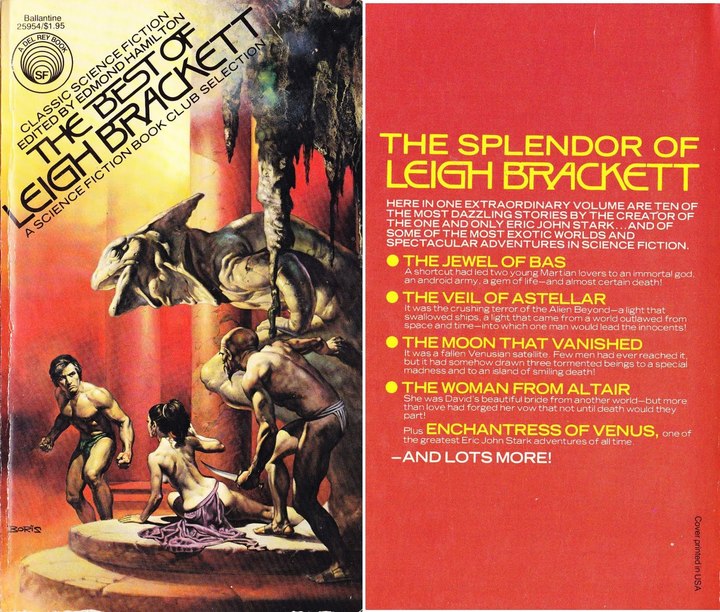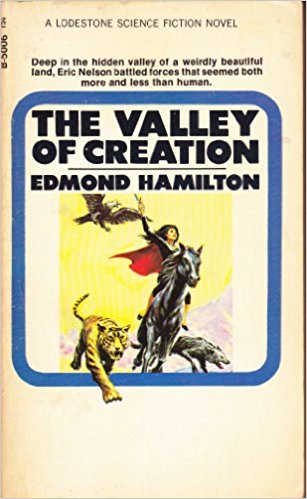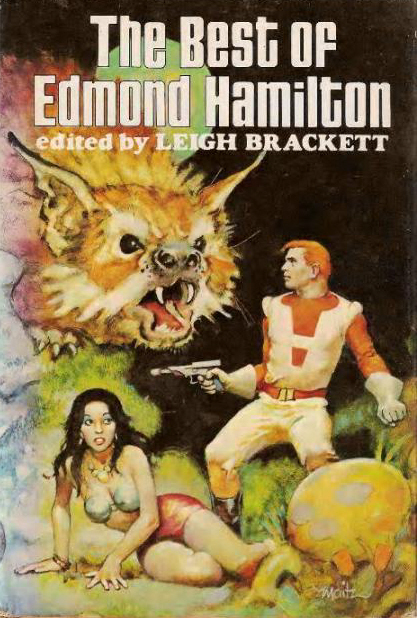Dead Cities, Space Outlaws, and Planet Gods: The Best of Leigh Brackett
Although Leigh Brackett (1915–1978) wrote planetary adventures during the Golden Age of Science Fiction and was married to Edmond Hamilton, one of the Golden Age’s most praised masters, she seems to, well, bracket the era rather than belong to it. Her stories set on fantastical versions of Mars and Venus are indebted to Edgar Rice Burroughs, while her dark emotional intensity looked forward to New Wave SF of the ‘60s. In his introduction to Martian Quest: The Early Brackett, Michael Moorcock wrote that “It’s readily arguable that without her you would not have gotten anything like the same New Wave … echoes of Leigh can be heard in Delany, Zelazny and that whole school of writers who expanded sf’s limits and left us with some visionary extravaganzas.”
The cocktail of Leigh Brackett’s style — mixing ERB and Robert E. Howard (Brackett could’ve written fantastic straight sword-and-sorcery) with the influences that shaped authors like Gene Wolfe and Jack Vance — is what makes her explode off the page in a way many of her Golden Age contemporaries no longer do. She feels startlingly fresh even when her stories occur in an impossible solar system. All the data NASA has brought back from the other planets cannot dampen Leigh Brackett’s power.


